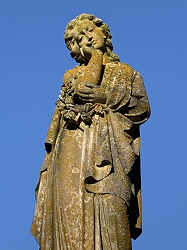Introduction
Grave Markers 101 is the introduction to a series of blogs on all things about grave markers. Also known as tomb-, head-, or gravestones, or monuments, grave markers are a way of commemorating the departed. They augment historical lineage for professional and hobby genealogists. The type of stone and engraving methods can reflect the aesthetics of history. They can also be a physical symbol of the wealth or worth of the departed; and sometimes gives clues to ethnicity or the locale of death.
When my brother and I have visited cemeteries, we often ended up with more questions upon leaving. We have visited to pay our respects – only to find that there was no visible gravestone. Was that planted rock the marker for a great-great-great grandfather? Or was that how graves were marked centuries ago? As a reader, have you ever wondered how graves are marked in other countries? Or, without being morbid, do you want ideas for your own grave marker? How do green cemeteries impact one’s decisions? I’m still researching obscure inscriptions and artwork on some stones that I may never solve.
Research for our book has opened many doors of interest and some of confusion. We wonder if anyone else feels the same. Wonder no more, and stay tuned for an investigative blog of all things related to grave markers. And like our publication, “Before I Depart,” each installment will interweave and dovetail for a complete overview.
The next installment is Part 1: Reasons to Continue Using Grave Markers.
Sis


